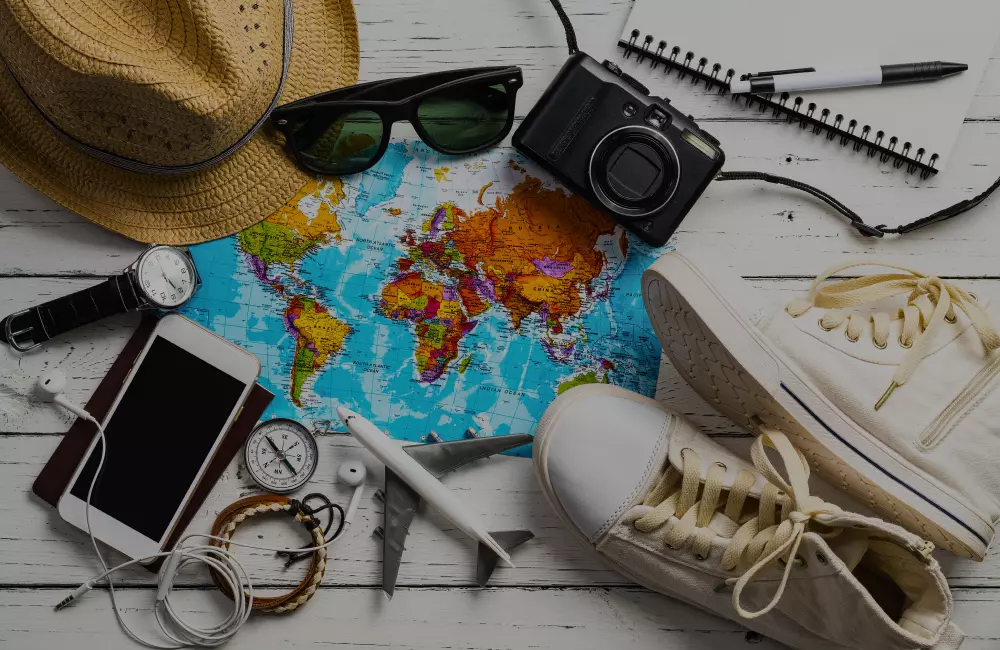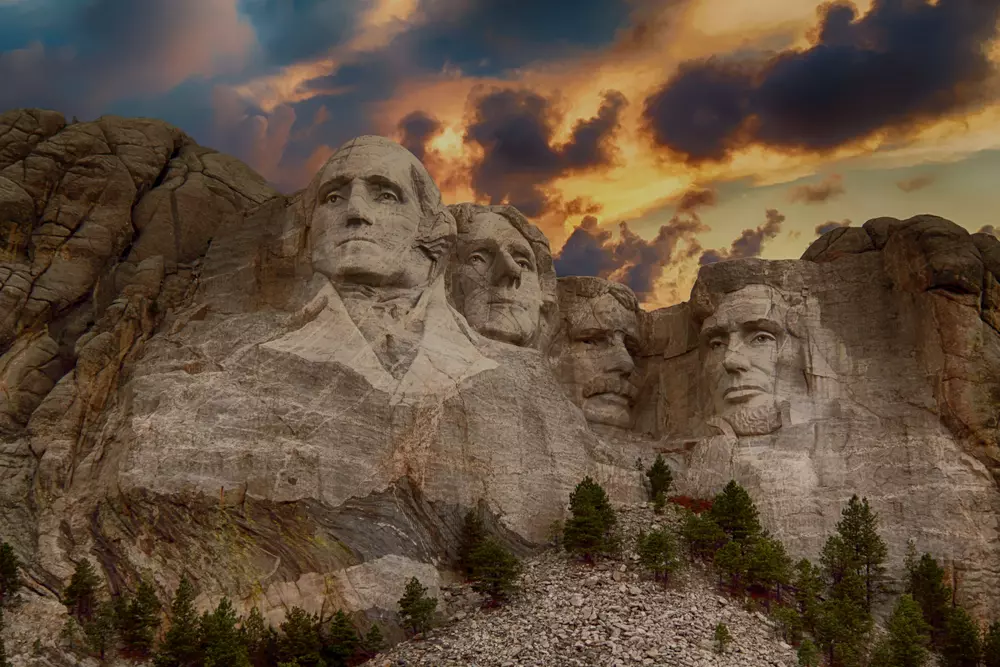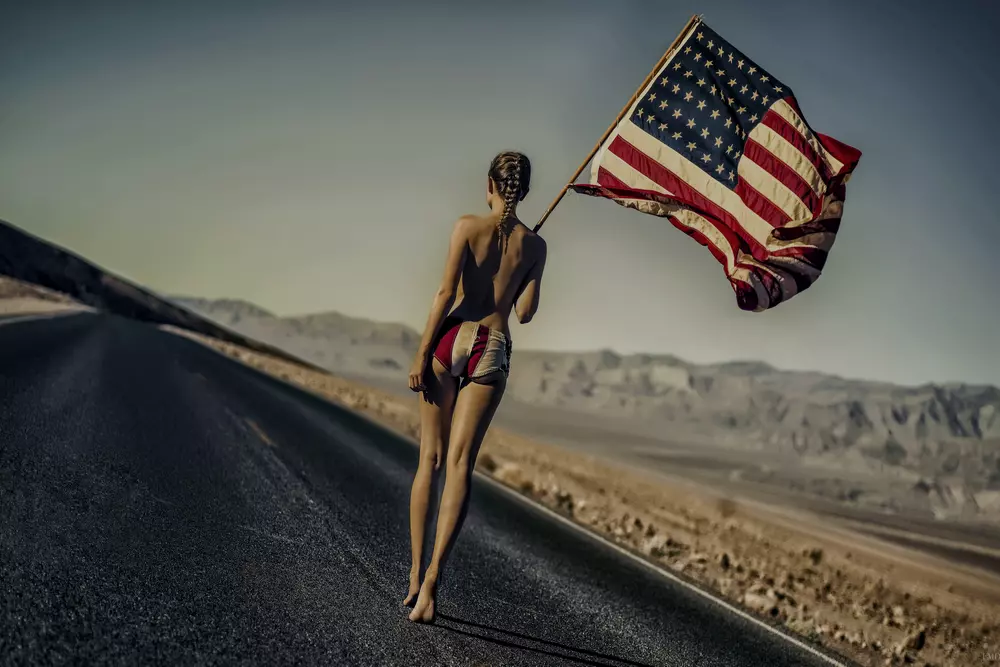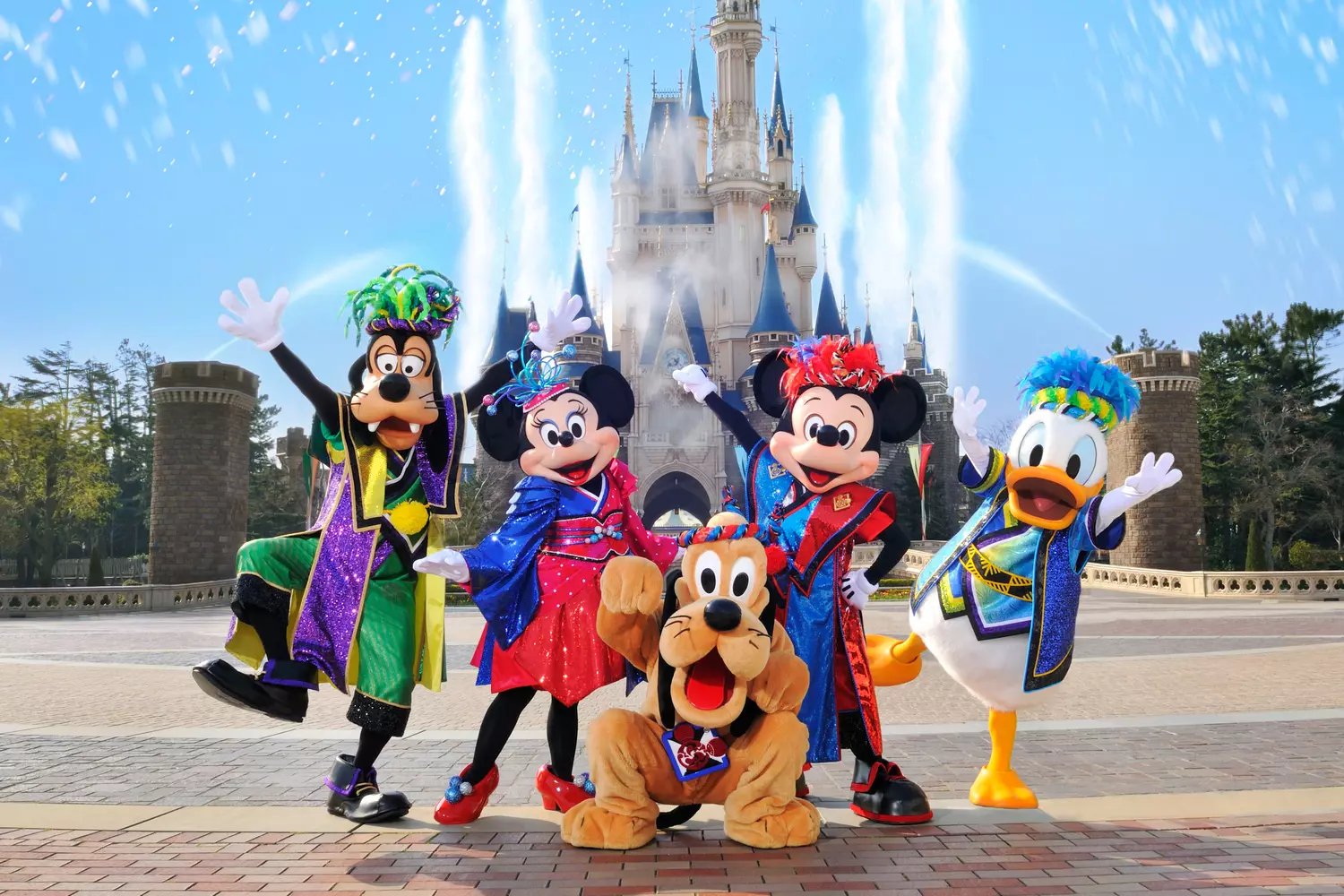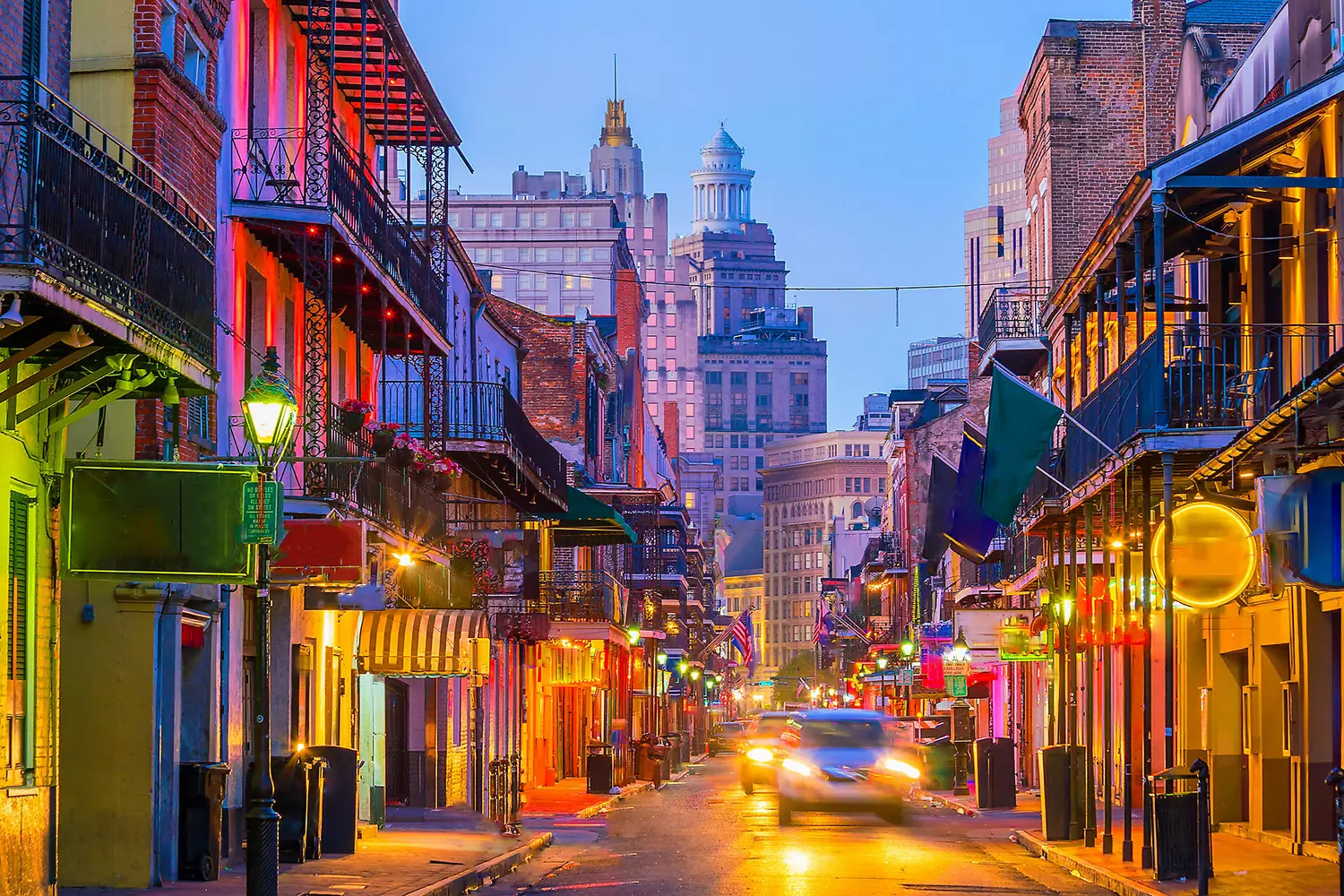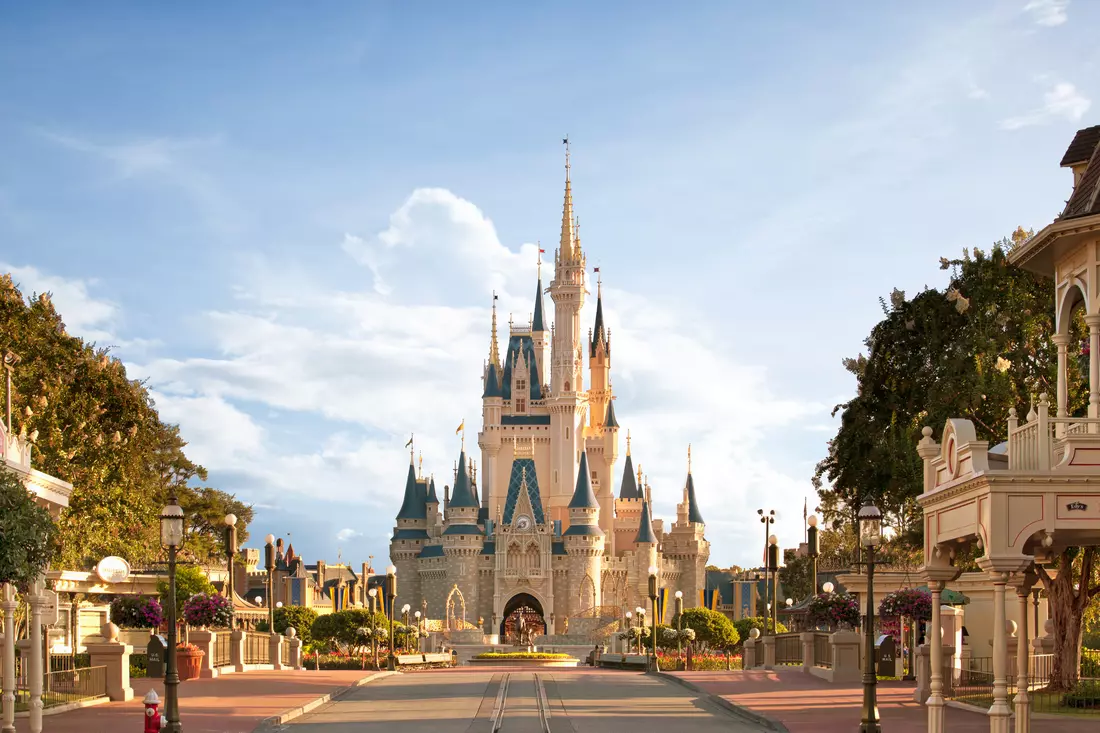"Chicago is not just a city. It’s a mood, a soundtrack, and architecture all in one."
Welcome to Chicago — a metropolis with character. Here, the spirit of freedom lingers, jazz fills the streets, and the skyscrapers seem to create their own skyline. This is a city where everyone can find something for themselves: from art lovers and culinary enthusiasts to those simply wanting to catch the true American vibe.
Chicago is the third largest city in the USA, located on the shores of the majestic Lake Michigan. It’s no coincidence it’s called "the city of great fires and great people": after the devastating fire of 1871, it rose from the ashes and became a pioneer in architecture and urban planning. The first skyscrapers were born here, as was the blues — along with a unique city rhythm you can hear even in the rumble of the subway or the buzz of the evening crowd.
Chicago is a city of contrasts. Modern glass buildings stand alongside Victorian mansions, hipster coffee shops sit next to street food stalls, and immersive museums coexist with the silence of historic parks. You can spend your morning at an art gallery, your afternoon in the sky from one of the observation decks, and your evening in a jazz club with a glass of bourbon.
This is not just a destination — it’s a story living in the present. Chicago leaves an impression that doesn’t fade away. And if you’re visiting for the first time, we’ve prepared for you the most useful, lively, and human guide possible.
Ready to fall in love with Chicago at first sight? Let’s go!

"Hollywood is showmanship, New York is talk, and Chicago is work." — Michael Douglas
Why is Chicago called the Windy City?
At first glance, it seems obvious: Chicago earned the nickname "The Windy City" because of its unpredictable and sometimes piercing weather. Lake Michigan, the surrounding plains, and seasonal temperature changes — all of these truly create powerful air currents. But the weather explanation is only part of the story. The real roots of the nickname are much more interesting.
- 01. Politicians, Words, and Wind
In the late 19th century, when Chicago was competing to host the 1893 World's Fair, New York journalists mocked Chicago politicians. They were loud, ambitious, and overconfident. Their speeches seemed overly boastful and were ironically dubbed "windy." That's how the nickname Windy City was born. - 02. The Wind You Can Feel
Nevertheless, the climate here is indeed windy. Chicago's location between the lake and the plains creates conditions for strong gusts of wind, especially during the transitional seasons. Tall buildings amplify this effect, forming real air corridors. Walking along the lakefront or Michigan Avenue, it's hard not to feel it firsthand.
Interesting fact: The wind is so important to Chicago that it plays a role in environmental policy — wind energy is actively developed here, and architects design buildings taking wind loads into account.
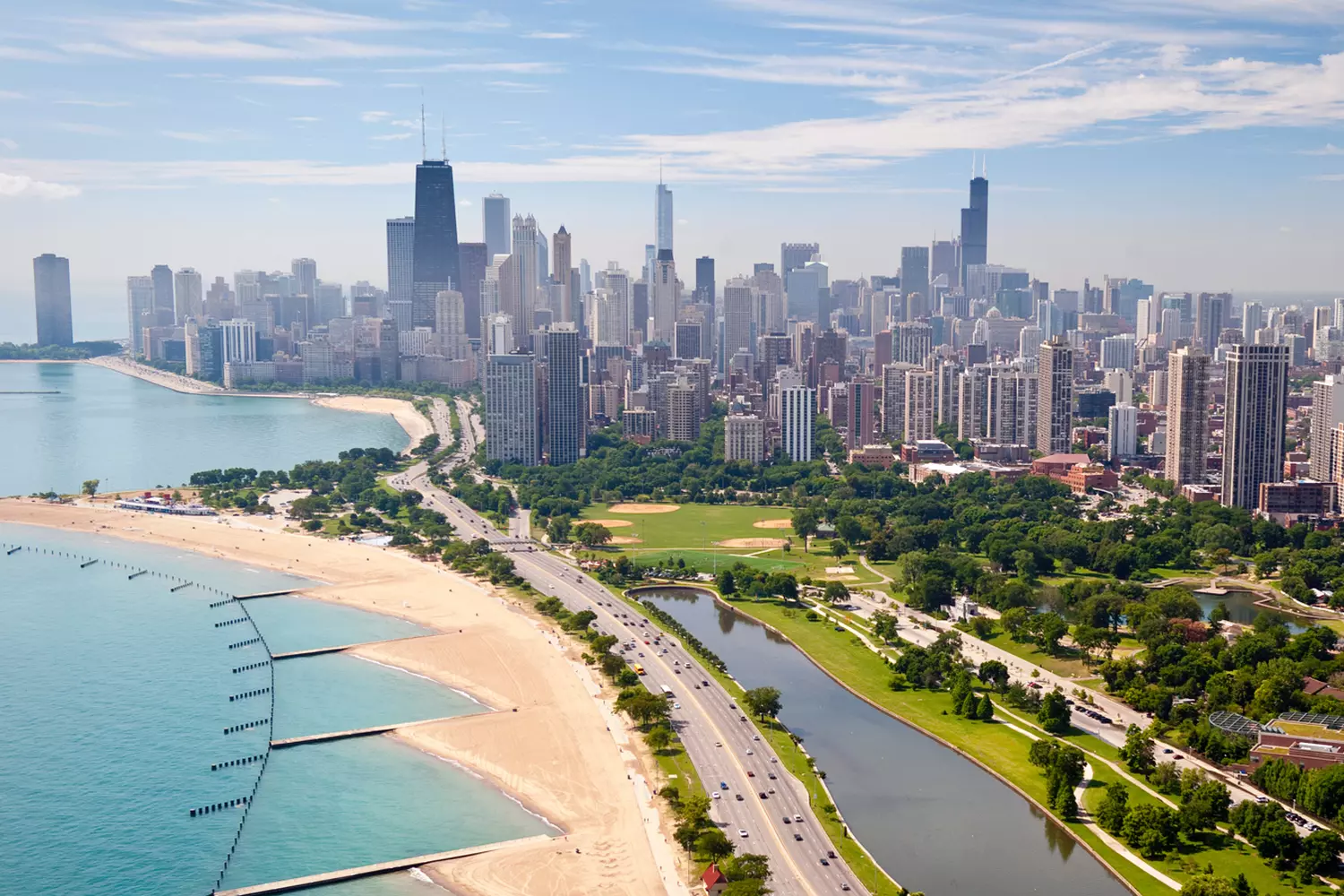
From Fort to Metropolis: The History of Chicago Without the Boring Bits
The history of Chicago doesn’t begin with skyscrapers, but with swamps, traders, and fires. And that’s exactly what makes it so fascinating.
The site of modern Chicago was once a swamp between the Great Lakes. It was home to Native American tribes, among which the Potawatomi stood out. The name “Chicago” comes from their word “shikaakwa”, meaning “smelly onion” — a name for the local swamp plants.
In the 1770s, French-Canadian fur traders arrived, but the real starting point was 1833, when Chicago officially became a city. At that time, it had only about 200 inhabitants.
- 01. Explosive Growth
In less than half a century, the city grew to over a million inhabitants — a world first. This was made possible by its unique location: Chicago became a crossroads of rivers, lakes, railroads, and trade routes. It turned into America’s transportation and logistics hub.
By the mid-19th century, immigrants from Europe poured in: Irish, Germans, Poles, Jews, and later Italians and African Americans from the South. This multicultural melting pot shaped the city’s rich cultural palette. - 02. The Great Fire of 1871
In October 1871, tragedy struck — the Great Fire destroyed much of downtown Chicago. Legend says it was started by Mrs. O’Leary’s cow, who knocked over a lamp in the barn. Over three days, more than 17,000 buildings burned down.
But this fire became a reset point: Chicago began rebuilding — faster, taller, and more modern. The era of architectural experimentation and skyscrapers began. - 03. Architectural Revolution
At the end of the 19th century, a new architectural movement was born in the city — the “Chicago School.” Architects like Louis Sullivan and Frank Lloyd Wright were the first to design buildings that were not only tall but functional and beautiful. The world’s first skyscraper was built here. - 04. Revival and Modernity
After World War II, Chicago reinvented itself again: suburban development accelerated, industrialization expanded, new transport hubs emerged, and museums, universities, and cultural centers appeared. Today, Chicago is simultaneously a high-tech center, the culinary capital of the Midwest, and one of America’s most important cultural platforms.
Chicago’s Gangster History: Shadows of Prohibition Era and the Legends of a Crime City
Chicago is a city known not only for its architectural skyscrapers and cultural landmarks but also for its dark yet incredibly captivating gangster history. The era of Prohibition (1920–1933) turned Chicago into the criminal capital of the USA, making it the setting for some of the most famous crime dramas of the 20th century. This period has become a legend told in books, films, and tours.
- 01. The Roots of the Criminal Empire: How It All Began
After Prohibition was enacted in 1920, banning the production and sale of alcohol, huge demand for illegal liquor emerged in Chicago. Smuggling and underground bars — speakeasies — became daily reality. It was here that the first criminal gangs formed, taking control of the illegal business.
- The ban created a huge black market — and millions of dollars in profit for those who knew how to circumvent the law.
- Police corruption and political intrigue provided fertile ground for gangsters.
- 02. Al Capone — The King of Chicago
The most famous figure of the gangster era is Al Capone. He headed the city’s largest criminal organization and became a symbol of criminal power.
- His “empire” controlled illegal alcohol, prostitution, gambling, and even bribery within the police and administration.
- One of the most notorious crimes was the “St. Valentine’s Day Massacre” in 1929, when a rival gang was brutally wiped out in downtown Chicago.
Despite all his crimes, Capone was convicted not for murder but for tax evasion — a classic example of how playing by the rules helped gangsters.
- 03. Other Legendary Gangsters and Gangs
- Johnny Torrio — Capone’s mentor and one of the founders of the criminal network.
- Dean O’Bannon and Bugsie Maganna — well-known figures linked to gambling and racketeering.
- The Bucks Family — influential crime clans controlling different city districts.
- 04. Gang Wars and Their Consequences
Gangster shootouts turned Chicago into a city where the streets were dangerous.
- Over 500 people died in street shootings during Prohibition.
- The city police were often powerless or corrupt, allowing criminals to act with impunity.
- 05. The End of an Era and Its Legacy
With the repeal of Prohibition in 1933 and stronger federal law enforcement, gangster influence gradually declined. However, the legends remain:
- Films like “Scarface” and “The Untouchables” popularized the image of Chicago mobsters.
- Today, Chicago offers tours to crime-related sites where visitors can learn stories and feel the atmosphere of those times.
This part of the past shows how social prohibitions and corruption can lead to major problems, and it also reminds us of the importance of law and order. At the same time, it remains an integral part of the city’s culture — inspiring artists, writers, and filmmakers.
The gangster era of Chicago is not just crime chronicles but a living historical heritage that helps understand how one of America’s most mysterious and multifaceted cities developed.
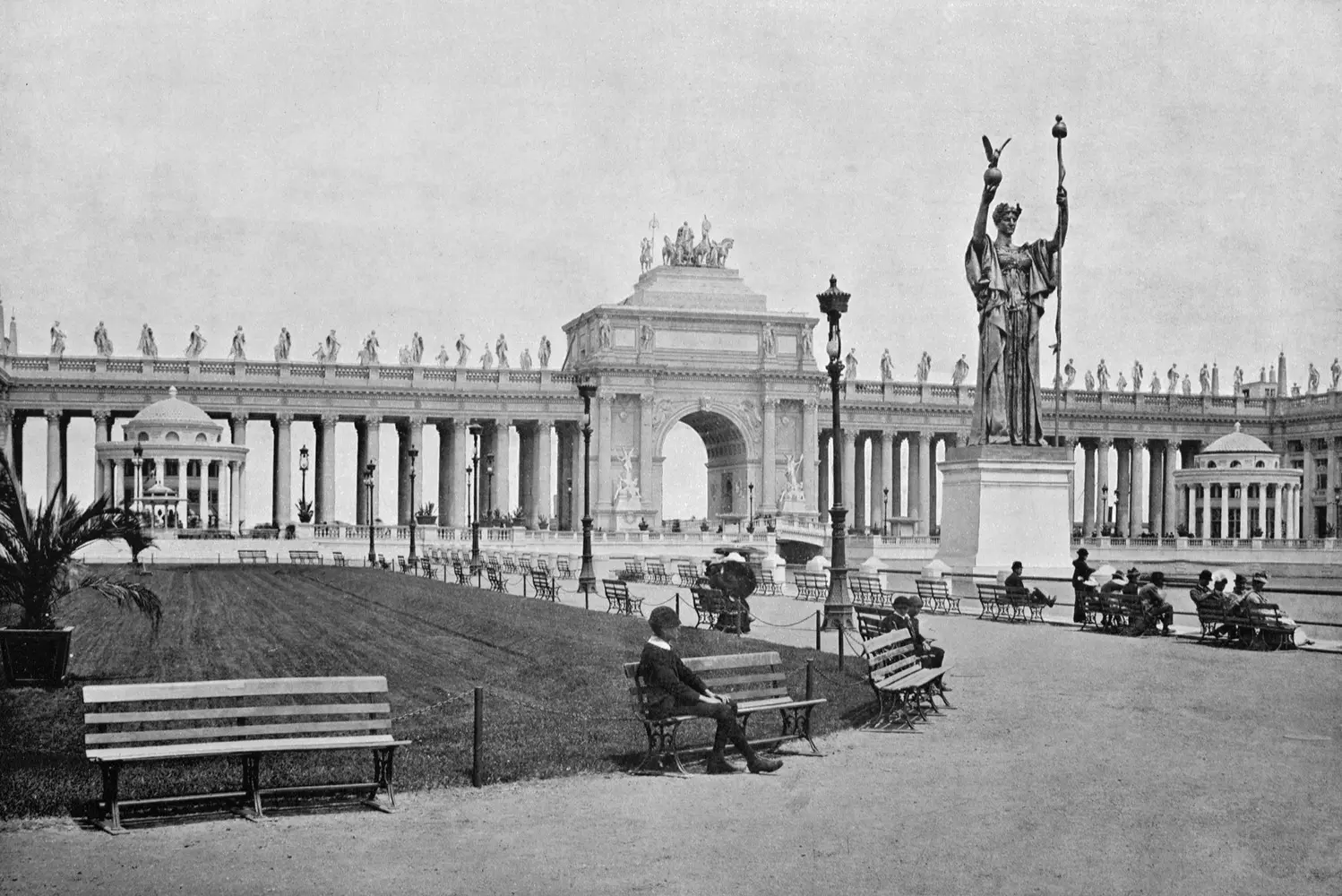
Where the Lake Wind Hides: Geography and Climate of Chicago
On the map of the USA, Chicago looks like a dot on the southwest shore of Lake Michigan. But in reality, it is a true crossroads of the continent. Here, the Great Lakes, plains, and a metropolis meet — a city that has managed to use its geographic features to its advantage.
- 01. Geography: Between the Lake and the Prairies
Chicago is located in Illinois, roughly equidistant from both US coasts. This makes it an important transportation hub. It’s just over a thousand kilometers in a straight line to both the Atlantic and the Pacific, but everything that matters passes through Chicago: freight trains, highways, air routes, and even river systems.
The city itself stretches along the southwest shore of Lake Michigan — one of the five Great Lakes. This gives Chicago not only spectacular landscapes and beaches right in the heart of the metropolis but also a strong influence on the climate. - 02. Climate: Four Seasons with Character
Chicago lies in a humid continental climate zone, meaning the weather here can change quickly and dramatically. Here’s what you should know:
- Winter
Cold, snowy, with strong winds. Temperatures can drop to −15 °C, especially with the “lake effect” — when warm air from the lake meets frosty air. - Spring
Unpredictable. One day, sunshine and +18 °C; the next — snow and wind. Spring in Chicago always arrives cautiously. - Summer
Warm and humid but comfortable. The average temperature is around +25 °C. Perfect time for walks along the waterfront and festivals. - Autumn
Bright, cool, and photogenic. Leaves in the parks shimmer in all shades, and the air is filled with freshness.
Interesting fact: Lake Michigan creates a unique climate phenomenon — “lake effect snow.” When warm air passes over the cold lake surface (or vice versa), dense clouds form and snowfalls intensify. That’s why winter in Chicago can be snowier than in other cities on the same latitude.

Who Lives in Chicago: A Mosaic of Cultures and Voices
Chicago is not just a metropolis. It’s a city that speaks dozens of languages, where every neighborhood has its own accent, and every celebration has its own roots. The population of Chicago is one of the main sources of its energy and uniqueness.
- 01. How many people live in Chicago?
According to the latest data, Chicago’s population is about 2.7 million people. This makes it the third largest city in the USA after New York City and Los Angeles. However, the Chicago metropolitan area — including suburbs — reaches nearly 10 million residents. - 02. An ethnic and cultural kaleidoscope
One of the city’s defining features is its ethnic diversity:
- African Americans make up about 30% of the population. Chicago is one of the key centers of Black culture, especially in music (jazz, blues, soul).
- Latino Americans — more than 28%, mainly Mexicans and Puerto Ricans. They have their own neighborhoods (like Pilsen) and vibrant culinary traditions.
- White Americans — around 33%, many descendants of Irish, Polish, Italian, and German immigrants.
- Asians — roughly 7%, primarily Chinese, Filipinos, and Indians.
In Chicago, you will find “Little Italy,” “Greek Town,” “Chinatown,” Ukrainian and Polish quarters, as well as numerous multilingual shops, cafes, and schools.
“Chicago is not a melting pot. It’s like an antipasto plate: each flavor stands on its own and all together it’s wonderful,” once said the city’s mayor.
- 03. Social structure and urban contrasts
Chicago is a city of opportunities but also challenges. Alongside wealthy neighborhoods like Lincoln Park and Gold Coast, there are less affluent areas where poverty, education, and safety remain pressing issues. The city works hard on these problems: creating reintegration programs, affordable housing, and educational initiatives. - 04. Languages and religions
While English is the official language, you’ll hear Spanish, Polish, Chinese, Arabic, and even Ukrainian in Chicago. Multilingualism is an integral part of city life. Chicago is also a multi-faith city, home to hundreds of churches, mosques, synagogues, and Buddhist temples.
Interesting fact: Chicago has the largest Polish population outside of Poland.
Yes, you read that right. It’s estimated that about 1 million people of Polish descent live in Chicago and its suburbs. They have their own schools, shops, radio stations, and even a distinct neighborhood — Avondale. Every year, the May 3rd Constitution Parade is held here — the largest celebration of Polish culture outside Europe.
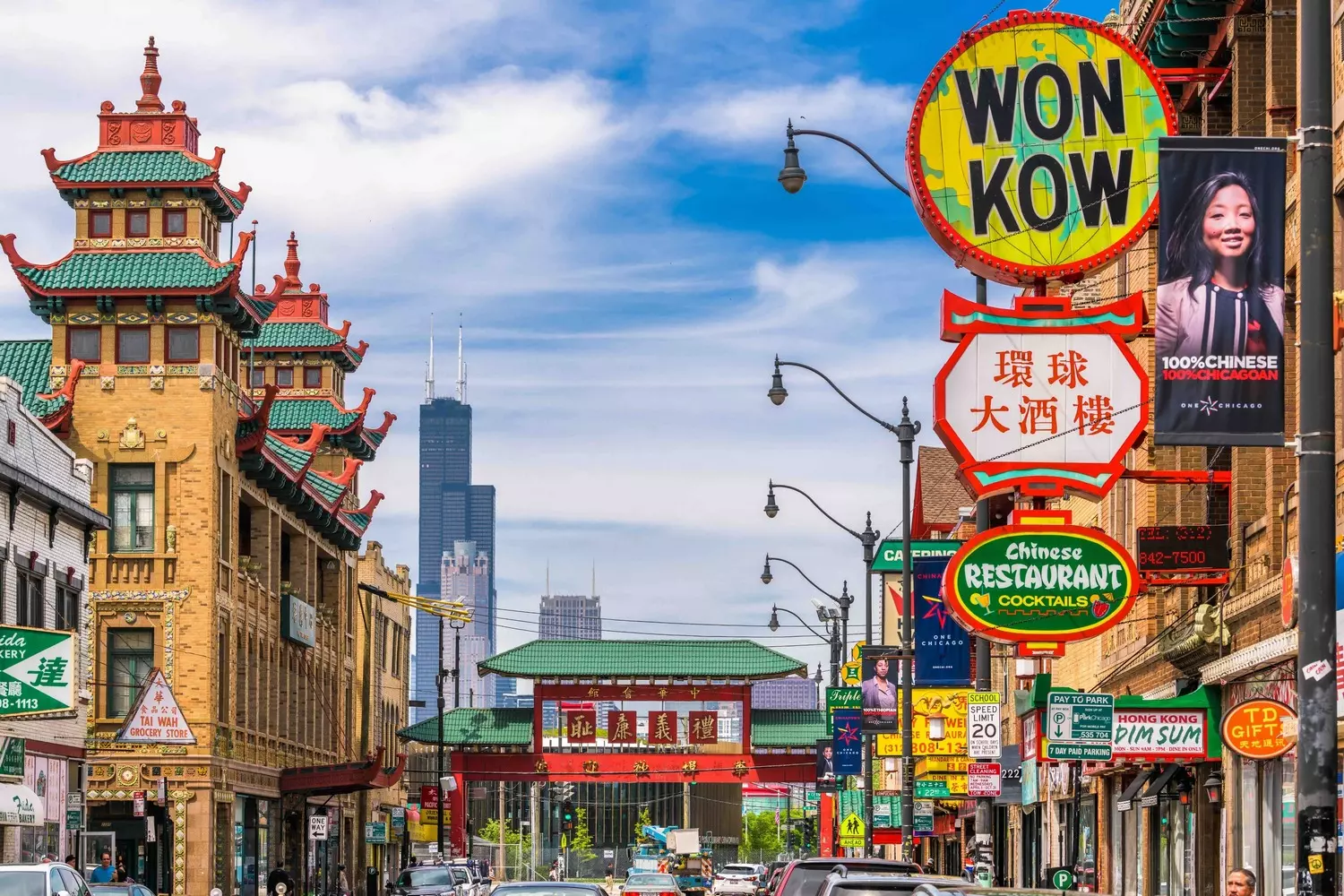
The Financial Heart of the Midwest: Chicago as America’s Second Business Hub
When it comes to America’s financial capitals, the first city that comes to mind is New York — with its Wall Street and billions in motion. But Chicago confidently holds the second place in this list, doing so in its own way — without much noise, yet with real influence.
- 01. Historical foundation: from grain to futures
Chicago didn’t become a financial center overnight. It all started with agriculture and grain trading. In the 19th century, when tons of corn, wheat, and soybeans from across the Midwest arrived by rail, there was a need to standardize deals. That’s how in 1848 the Chicago Board of Trade (CBOT) was established — one of the oldest exchanges in the world.
Chicago is where the futures market was born — financial contracts that allow locking in prices for commodities in the future. This mechanism made the city one of the key players in the global economy. Even if you’re not into trading, there’s nearly a 100% chance that your breakfast (coffee, sugar, bread) depends on prices set in Chicago. - 02. Modern exchanges and global corporations
Today, Chicago is home to CME Group — the largest exchange holding company in the world. It includes: Chicago Mercantile Exchange (CME), Chicago Board of Trade (CBOT), New York Mercantile Exchange (NYMEX), and COMEX. Here, not only agricultural products but also currencies, interest rates, energy commodities, precious metals, cryptocurrency futures, and even weather derivatives are traded.
Chicago also hosts major consulting, auditing, and investment firms like Deloitte, KPMG, McKinsey, Accenture, and others. It’s here that strategies are developed which shape entire industries. - 03. Access to talent and logistics
Chicago benefits from its location. Unlike New York or San Francisco, here office rents are lower, taxes are less, logistics are simpler (right in the heart of the country!), and access to universities and young professionals is higher. These factors make the city attractive for fintech startups and corporate headquarters. - 04. Education and talent development
The University of Chicago, DePaul University, University of Illinois at Urbana-Champaign, and other institutions prepare top specialists in economics, finance, statistics, and risk management. Many graduates stay here and build careers on exchanges, in banks, and investment funds. - 05. Innovation and technology
Modern Chicago actively develops algorithmic trading and financial technology. Many labs focused on machine learning, big data analytics, and trading automation operate here.
It’s often said: if New York is the face of American finance, then Chicago is its brain.
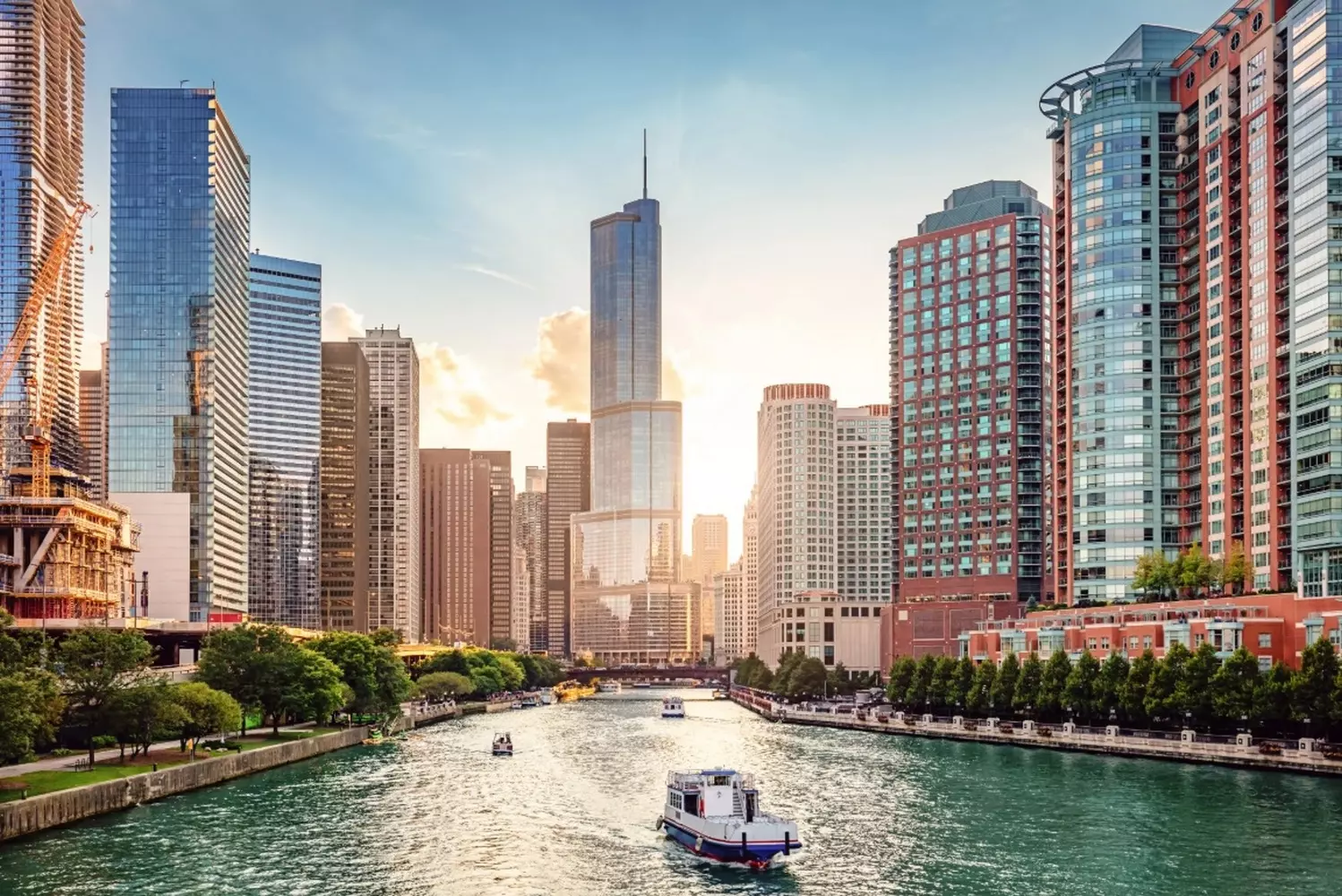
The Mysteries of Alcatraz Prison: A Guide to the Island
Chicago Landmarks: Must-See and Must-Feel Experiences
Chicago is a city you need not only to see but also to feel. Its landmarks aren’t just photo spots — they’re living symbols of the city’s spirit. Here’s what you should see to truly understand Chicago:
- 01. Millennium Park and Cloud Gate (the famous “Bean”)
If you’ve seen photos of the mysterious mirrored drop — that’s Cloud Gate, affectionately known as the “Bean”. This is more than just an art installation; it’s a symbol of the new Chicago. British artist Anish Kapoor created a sculpture that reflects the city’s sky, people, and skyscrapers, turning everything around into a living, moving picture. The “Bean” weighs 110 tons but seems weightless thanks to its perfectly polished surface.
- The best time for photos is at sunrise, when the sunlight plays on the surface and tourists haven’t arrived yet.
- Surrounding it is the green Millennium Park with fountains, the Jay Pritzker Pavilion concert stage, and a lively atmosphere year-round.
- 02. The Art Institute of Chicago
This isn’t just a museum — it’s a temple of art. One of the oldest and largest museums in the U.S., it ranks among the top five worldwide. Here you can see Edward Hopper’s “Nighthawks,” Grant Wood’s “American Gothic,” Van Gogh’s Room, masterpieces by Cézanne, Monet, Matisse, Surrealists, and many others.
The collection spans over 5,000 years — from Ancient Egypt to modern times. The museum is housed in a picturesque building on Michigan Avenue, guarded by two famous lions at the entrance.
- Free audio guides make the visit interesting even for those less familiar with art.
- Set aside at least 2-3 hours, but half a day is better.
- 03. Willis Tower and Skydeck Chicago
Once the tallest skyscraper in the world, Willis Tower (formerly Sears Tower) invites you to its 103rd floor for the Skydeck — an observation deck with transparent glass balconies that hover over the city.
- A photo with the city beneath your feet is a must-have.
- The glass floor is a real challenge for those afraid of heights but an unforgettable experience.
- Visit before sunset — the view of the city and Lake Michigan is mesmerizing.
Fun fact: the tower can sway slightly in strong winds — part of its engineering design.
- 04. Chicago Riverwalk
This is the heart of the city, beating in rhythm with the water. Chicago Riverwalk is a waterfront promenade with cafes, bars, galleries, and places to relax.
- You can take an architectural boat tour here — one of the best ways to learn about Chicago.
- Live music, street artists, and picnics on the steps by the water make the atmosphere always vibrant.
- At night, the illuminated buildings and bridges turn your walk into a romantic movie scene.
- 05. Magnificent Mile — elegance, history, and storefronts
This isn’t just a street — it’s a living gallery of architecture, shopping, and urban culture. The Magnificent Mile stretches along Michigan Avenue from the river to the Chicago Water Tower.
- Here you’ll find famous boutiques, shopping centers (Water Tower Place, 900 North Michigan Shops), hotels, and restaurants.
- Historic buildings like the Wrigley Building and Tribune Tower line the street.
- Every storefront is a photo opportunity.
- 06. Navy Pier: family fun on the water
Located on the shore of Lake Michigan, Navy Pier is a complex featuring a park, a Ferris wheel, museums, theaters, and piers. Festivals, fireworks, and boat or catamaran rides take place here.
- Try the Centennial Wheel: 200 feet above the water!
- Chicago Shakespeare Theater, Children’s Museum, restaurants, and shops.
- Fireworks over the lake every Wednesday and Saturday in summer.
- 07. Lincoln Park and Zoo
A huge city park offering a break from the bustling center. Lincoln Park features a botanical garden, beaches, ponds, and a free zoo.
- One of the few free zoos in the U.S., home to lions, bears, giraffes, and penguins.
- Stunning landscapes and picnic spots.
- A great place for photos with the Chicago skyline in the background.
- 08. Museum of Science and Industry
If you’re traveling with kids (or love hands-on learning yourself), this museum will amaze you. From the U-505 submarine to a tornado simulator and exhibits about the future.
- Engaging interactive exhibits at every turn.
- Ideal for 2-4 hours of visiting.
- 09. Adler Planetarium
Situated on the lakefront, Adler is the oldest planetarium in the U.S. and a true gateway to space.
- Interactive exhibits about stars, space, and astronomical discoveries.
- Dome shows: feel like you’re on another planet.
- A perfect spot for evening photos with views of the lake and city skyline.
- 10. Shedd Aquarium
One of the most visited aquariums in the world. Home to over 30,000 marine creatures — from belugas and penguins to tropical fish and sharks.
- Marine shows with dolphins and sea lions.
- “Amazon,” “Caribbean Sea,” and “Polar Regions” zones.
- We recommend buying tickets online — it’s faster and cheaper.
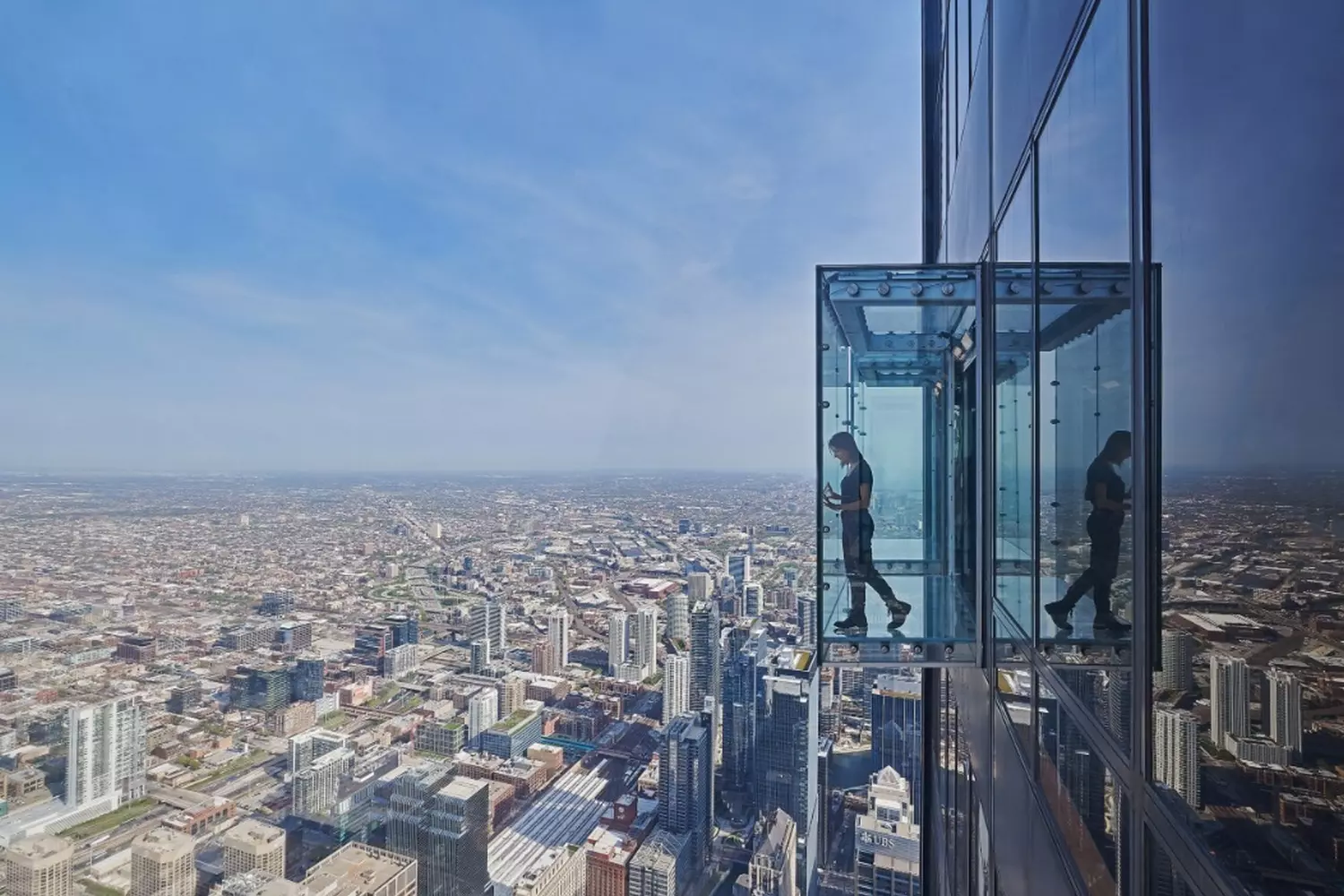
Chicago Architecture: Skyscrapers as Art and Symbols of Urban Revival
Chicago is the cradle of skyscrapers and a hub of architectural innovation that has transformed the skyline of the entire world. It was here, after the devastating Great Fire of 1871, that the city was not just rebuilt — it was reimagined. For the first time, architects had to look upward and use steel to create buildings that not only serve a purpose but also captivate with their form and ideas.
- 01. Great architects and architectural schools of Chicago
True giants of architecture worked and created in Chicago:
- Frank Lloyd Wright
A master of organic architecture, who in his homes sought to blend with nature and surroundings. His concept of the “Prairie Style” had a huge influence on modern architecture. - Daniel Burnham
One of the founders of the Chicago School of Architecture, a pioneer in creating the first skyscrapers. He participated in the city’s reconstruction after the fire and was the chief organizer of the 1893 World’s Columbian Exposition, which cemented Chicago’s status as a center of architectural innovation. - Ludwig Mies van der Rohe
German-American architect, founder of modern minimalism in architecture. His famous phrase “less is more” reflects the philosophy of clean lines and functionality.
- 02. Iconic buildings of Chicago — a journey through history and styles
- Wrigley Building — a pearl on Michigan Avenue
This Spanish Revival style building has been a symbol of business Chicago since the 1920s. Its snow-white terracotta facade is illuminated by lights, creating the impression of an urban fairy tale. Interestingly, its clocks on the facade are among the largest in the city. Nearby is the Chicago Water Tower — another historic symbol of the city. - Tribune Tower — Gothic in the heart of the metropolis
The tower with its clock was built in 1925 as a tribute to architectural tradition and historical memory. Stones and bricks from famous world landmarks — from the Great Wall of China to the Colosseum — are embedded in its walls. The architecture resembles a medieval castle. Gothic arches and decorative elements can be seen on the facade. - Aqua Tower — a modern wave-shaped skyscraper
Built in 2009, this residential skyscraper became a true work of art with a facade resembling waves. Designed by American architect Jade Kadaba, it demonstrated that high-rise buildings can be not only functional but also aesthetically stunning. Each balcony has a unique shape, creating a sense of movement. From Aqua’s height, breathtaking views of Lake Michigan and the city open up. - Marina City — “corn cobs” on the Chicago River
A complex of two cylindrical towers built in the 1960s, it became one of the city’s most recognizable silhouettes. The nickname “corn cobs” comes from their unusual shape, reminiscent of corn cobs. At the base of the buildings are some of the world’s first automated parking garages. The complex also includes residential apartments, offices, restaurants, and even a theater. - John Hancock Center
A bold steel structure with characteristic cross braces, topped with an observation deck offering panoramic views. - The Rookery Building
A building from 1888 combining elements of Victorian and early modern architecture, with a stunning interior atrium designed by Frank Lloyd Wright. - Tribune Tower Annex and Aqua Tower
Examples of modern architectural art and innovation continuing the city’s traditions.
In Chicago, skyscrapers are not just offices and apartments. They are living history embodied in steel and glass. The city’s architecture reflects the spirit of the times, technological progress, and cultural shifts.
Chicago is a city where architecture tells stories, inspires, and never ceases to amaze. A walk through its streets is a journey through eras and styles — from classic to ultra-modern forms that set trends worldwide.

Chicago Transportation: How to Get Around the City with Comfort and Style
Chicago is a vast metropolis sprawled along the shores of Lake Michigan, renowned for its well-planned and extensive transportation system. To get to know the city in all its facets and easily travel between major attractions, it’s important to understand what types of transport are available and how to use them.
- 01. The “L” Metro — the heart of urban transit
Chicago’s rapid transit system, known as the “L” (short for “elevated”), is one of the oldest and largest in the USA. Its lines cover nearly the entire city and parts of the suburbs.
- The unique feature of the “L” is its elevated tracks downtown and tunnels in the suburbs. This creates a distinctive urban landscape with trains running high above the streets.
- 8 lines, over 140 stations — totaling about 230 kilometers of track.
- Trains run every 5-10 minutes during peak hours, making the “L” the fastest way to get from point A to point B in Chicago.
- Payment is made with a unified transport card, the Ventra Card, which also works on buses.
- 02. Buses — flexibility and coverage
If the “L” is the skeleton of the transport system, buses are its circulatory system, delivering passengers to places where tracks don’t reach.
- Chicago operates more than 130 bus routes.
- Many buses run 24/7, ensuring round-the-clock transport accessibility.
- Apps with schedules and live bus tracking help plan trips down to the minute.
- 03. Bicycles and scooters — the city’s style of movement
In recent years, Chicago has actively developed infrastructure for cyclists and electric scooter users.
- The Divvy Bikes network offers thousands of bikes for short-term rental throughout the city.
- Electric scooters are available on the streets and can be easily picked up and dropped off in designated zones.
- More than 300 km of bike lanes make cycling safe and enjoyable, including scenic routes along the shore of Lake Michigan.
- 04. Taxis and ridesharing — comfort for every taste
Want to get around quickly and conveniently without transfers?
- Traditional yellow taxis are available throughout downtown and airports.
- Uber and Lyft services are widespread, often cheaper than taxis, and allow you to book rides in advance with a fare estimate.
- For trips to O’Hare and Midway airports, specialized shuttles and transfers are often recommended to avoid parking and traffic hassles.
- O’Hare International Airport (ORD)
One of the busiest airports in the world, located about 27 km from downtown. Connected to the city by the metro (Blue Line), buses, and taxis. - Midway International Airport (MDW)
Located closer to downtown, about 16 km away, primarily serving domestic flights and some international routes.
Both airports are equipped with convenient infrastructure, shops, restaurants, and car rental services.
Parking and driving: tips for motorists
If you plan to travel by car, keep in mind:
- Parking in downtown and tourist areas is paid, but there are many parking garages with varying prices.
- Parking costs and rules vary by neighborhood, so it’s best to check signs in advance and use mobile apps.
- Chicago is known for traffic jams during rush hours, especially on Michigan Avenue and the highways around downtown.
Pedestrian zones and a comfortable walk
Chicago is a city well suited for walking.
- The riverfront promenade, Millennium Park, Magnificent Mile, and Lincoln Park are places where you can stroll for hours, enjoying the city.
- Benches, cafes, and green areas along the streets provide spots for rest.
- Numerous crosswalks and pedestrian bridges ensure comfort and safety.
Interesting fact: Chicago was the first city in the USA to introduce an automatic traffic light system and developed a complex network of transport routes, making its transit system one of the most modern in the early 20th century.
Transportation in Chicago is a mix of history and modernity, from the vintage “L” to new green initiatives with bikes and electric scooters. To get the most out of your trip, it’s worth planning your routes in advance and using convenient apps. Whether you prefer fast metro rides, leisurely walks, or comfortable taxis — Chicago will always find a way to get you where you want to go.

Gastronomic Chicago: More Than Just Deep-Dish Pizza
When you hear “Chicago,” the famous deep-dish pizza immediately comes to mind — thick, with a crispy crust, loaded with cheese, and rich tomato filling. Yes, this iconic recipe deserves respect, but Chicago’s gastronomy is much more than that. The city is renowned for its diverse cuisine, reflecting immigrant traditions, local ingredients, and an innovative approach to classics. Let’s embark on a delicious journey through Chicago’s culinary scene!
- 01. Deep-Dish Pizza — the queen of the table
- This type of pizza was born right in Chicago in 1943. Thick dough forms a deep “bowl” filled with cheese, meat, and tomato sauce on top.
- The taste is rich and hearty — a slice of such pizza replaces a full meal.
- Popular places: Lou Malnati’s, Giordano’s, and Gino’s East — must-visit spots to try this dish.
- 02. Italian Beef Sandwiches
- Thinly sliced beef, braised in a flavorful broth with herbs and spices, served in a fresh bun.
- Often served with pickled peppers for a spicy kick.
- “Juice” sauce — the special broth the meat was cooked in — makes it truly juicy.
- A classic Chicago street food, especially popular in the Little Italy area.
- 03. Chicago-style Hot Dogs — no ketchup allowed!
- The Chicago hot dog is a true ritual: a sausage in a soft bun, mustard, onions, pickled cucumbers, tomatoes, chili peppers, and salted pickles, topped with celery salt.
- The main rule — no ketchup, only the classic set of ingredients.
- A great pairing with local beer or lemonade.
- 04. Garrett Popcorn — popcorn with character
- The sweet-and-salty “Chicago Mix” — a signature combination of caramel and cheese popcorn.
- Popcorn here is not just a snack but a true gastronomic delight.
- Garrett Popcorn Shops have become a Chicago icon — their bags can be seen on the streets and in residents’ homes.
- 05. Cocktails and Speakeasy Bars — the atmosphere of the 1930s
- Chicago was the center of Prohibition, and it was here that famous speakeasies — secret bars serving illegal alcohol — emerged.
- Today, the city has many bars styled after the gangster era and jazz, where you can try classic cocktails like Old Fashioned, Sidecar, and Bee’s Knees.
- Some places feature live jazz music in the evenings, adding a special atmosphere.
- 06. Additional culinary gems
- Polish Sausage (Kielbasa)
Polish sausage served with mustard and rye bread, reflecting Chicago’s Polish heritage. - Jibarito
A Puerto Rican sandwich with fried green plantain slices instead of bread, filled with pork, cheese, and garlic mayo. - Seafood Restaurants
Thanks to the proximity of Lake Michigan, you can try fresh walleye, pike, and other freshwater fish here.
- 07. Signature Room — a gastronomic skyscraper
- The highest restaurant in the Western Hemisphere, located on the 95th floor of the John Hancock Center.
- Here you can enjoy not only exquisite dishes but also breathtaking views of Chicago and Lake Michigan.
- A perfect spot for a romantic dinner or special occasion.
Gastronomic Chicago is a story of history and innovation, street food and refined dishes, traditions and experiments. Whether you want to grab a classic hot dog or indulge in an elegant dinner with a city view — there’s a flavor for everyone here. Try not only deep-dish pizza but also discover the true culinary treasures of this metropolis!
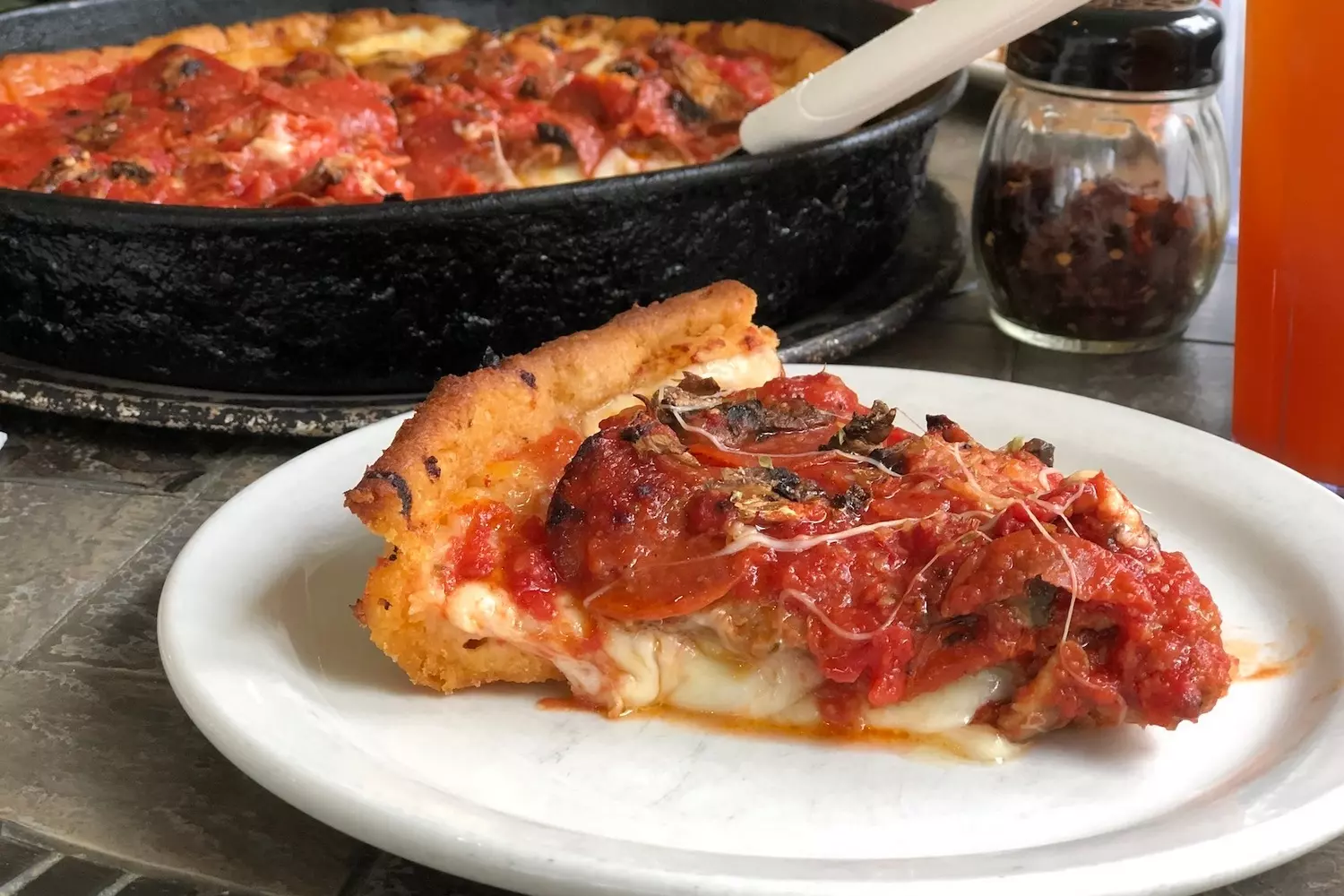
Culture and Music of Chicago: From Blues Legends to Live Street Jams
Chicago is a city where music and art live in every corner, creating a unique atmosphere that captivates and inspires. Here, history intertwines with modernity, and street musicians share the stage with world stars. From blues and jazz to opera and street theater — Chicago’s cultural palette is remarkably rich and diverse.
- 01. The Musical Capital of Blues and Jazz
Chicago is one of the main centers of American blues. After the Great Migration of African Americans from the southern states, the city became the birthplace of new musical genres and sounds.
- Legends like Louis Armstrong and Madonna began their musical journeys right here in Chicago.
- Blues clubs on the South Side of Chicago still attract true lovers of live music — don’t miss an evening at the famous Kingston Mines or Buddy Guy’s Legends.
- Jazz underground clubs in the River North and Wicker Park areas preserve traditions while experimenting with modern trends.
- 02. Chicago Theatre — the golden hall with perfect acoustics
- This historic Baroque-style theater opened in 1921 and has since become a symbol of the city’s cultural life.
- Inside is a magnificent hall with rich decor and acoustics recognized as some of the best in the world.
- Concerts, musicals, comedy shows, and special events take place here.
- Address: 175 N State St, near State Street — the perfect place for those who want to immerse themselves in the atmosphere of classic culture.
- 03. Grant Park and the Lollapalooza Festival — music under the open sky
- Grant Park is a huge green oasis in the city center, where one of the largest music festivals in the USA, Lollapalooza, takes place every year.
- Multiple stages feature world stars of various genres — from rock and hip-hop to electronic music.
- The festival attracts hundreds of thousands of fans and creates a true summer celebration atmosphere.
- There are many spots around the park for relaxation, cafes, and street performers.
- 04. House of Blues — the heart of blues and rock
- This club combines a concert venue with a restaurant serving Southern cuisine.
- The program includes live performances by both legendary musicians and emerging talents.
- The interior is decorated with contemporary artworks reflecting the spirit of the blues.
- There are several locations in Chicago, but the main venue is on North Dearborn Street.
- 05. Street Jam Sessions on State Street — urban improvisation
- Walking down State Street, you can hear live music at every step: from guitar riffs to vocal improvisations.
- Musicians of various styles gather here spontaneously, creating unique collaborations.
- Street performers, dancers, and theater troupes often work nearby.
- The atmosphere immerses you in a true urban carnival, where any passerby can become a spectator or even a participant.
- 06. Additional Cultural Gems of Chicago
- Chicago Symphony Orchestra (CSO)
One of the world’s best symphony orchestras, performing at the famous Auditorium Theatre. - Second City
The legendary comedy theater where stars like Bill Murray and Tina Fey launched their careers. - Art Institute of Chicago
Regularly hosts cultural evenings with musical performances and theatrical productions. - Chicago Opera Theater
A place for those who appreciate opera in contemporary interpretations.
Here, culture is not an abstract concept but the living breath of the city. Music, theater, street performances, and major festivals create a unique atmosphere where everyone can find something of their own. From blues to opera, from street jams to concerts in historic theaters — cultural Chicago is always open to new experiences and connections.
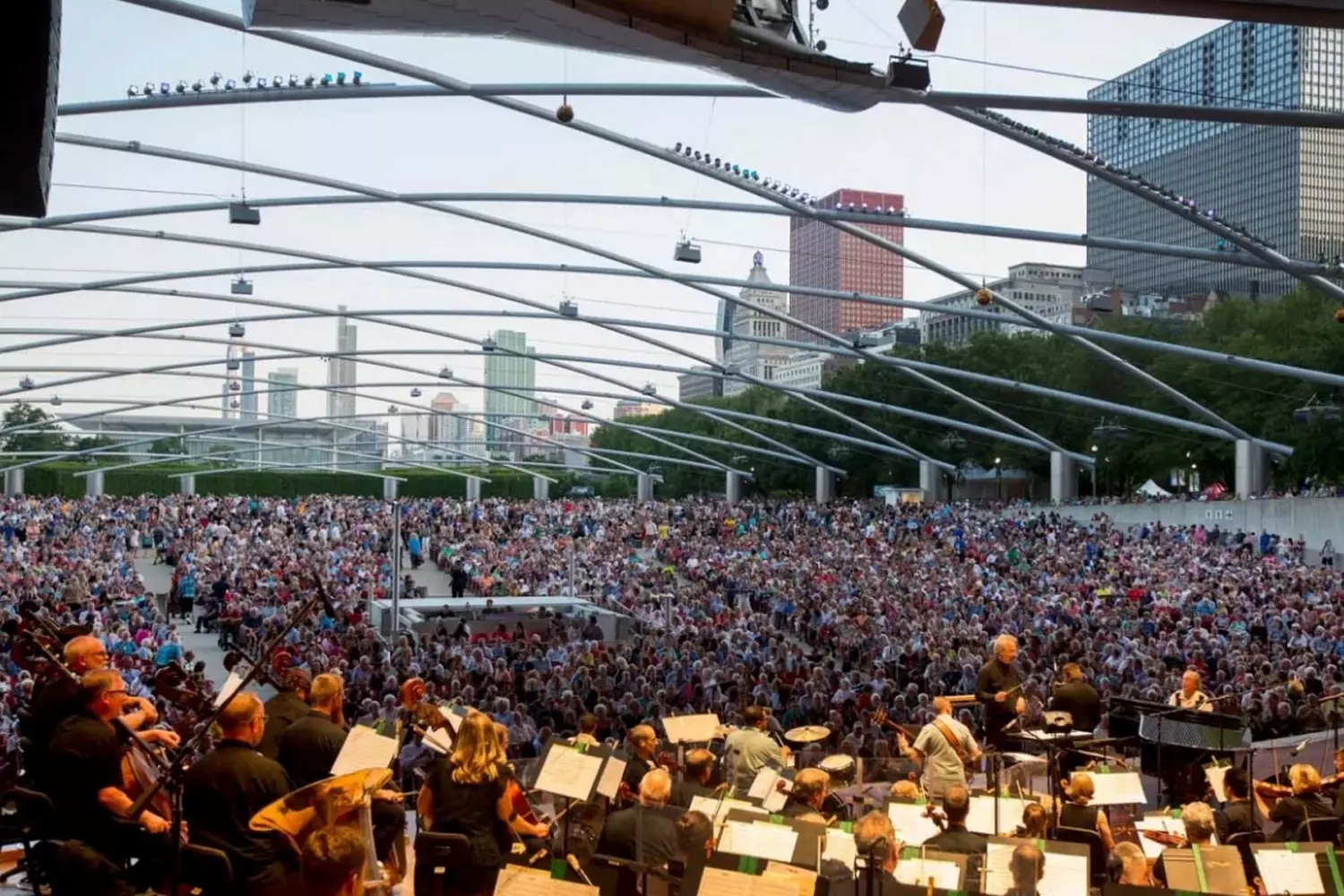
Education in Chicago: A City of Knowledge, Innovation, and Opportunity
Chicago is not only an economic and cultural center but also an important educational metropolis. The city hosts numerous prestigious universities, research institutes, and educational institutions of various levels. Education in Chicago is a unique blend of classical traditions and innovative approaches, making the city attractive to students from around the world.
- University of Chicago
One of the most influential and prestigious universities worldwide, renowned for its achievements in economics, law, social sciences, and medicine. It has been the birthplace of ideas that changed global science and politics, with many Nobel laureates as part of its history. - Northwestern University
Located in the suburb of Evanston, this university is famous for its programs in journalism, business, engineering, and medicine. Its campus is surrounded by picturesque lakes and parks, creating an ideal environment for study and research. - University of Illinois at Chicago (UIC)
A large research university with extensive programs in engineering, medical, and social sciences, actively collaborating with industry and government organizations.
- 02. Primary and Secondary School System
Chicago has one of the largest public school systems in the country — Chicago Public Schools (CPS), which includes over 600 schools.
- The city also has many private and charter schools offering programs with advanced study of languages, sciences, arts, and technology.
- Many schools work closely with universities and businesses, providing students with practical skills and internship opportunities.
- Special attention is given to inclusive education and support for multilingual students.
- 03. Educational Innovations and Research
Chicago is known for its research centers working in medicine, biotechnology, engineering, and social sciences.
- The Chicago Medical Center is one of the largest in the country, combining clinics, scientific laboratories, and educational institutions.
- The startup ecosystem and science parks affiliated with universities create unique opportunities for students and young researchers to implement innovative projects.
- 04. Cultural Education and Arts
- Chicago places great emphasis on the development of creative disciplines. Art schools, theater studios, and music academies offer programs from beginner to professional levels.
- Many libraries and cultural centers in the city organize educational programs, workshops, and lectures accessible to everyone interested.
- 05. International Students and Educational Programs
Chicago is a global educational hub attracting thousands of students from different countries.
- Universities offer a wide range of programs in English, including undergraduate, graduate, and doctoral studies.
- Many organizations assist international students in adapting and integrating into the local community.
Education in Chicago is not just about earning a diploma; it is an immersion into a dynamic, innovative, and culturally rich environment. The combination of prestigious universities, advanced research centers, and an extensive school system makes this city an ideal place for those seeking growth and new knowledge. Regardless of age or interests, everyone in Chicago can find their path to educational success.
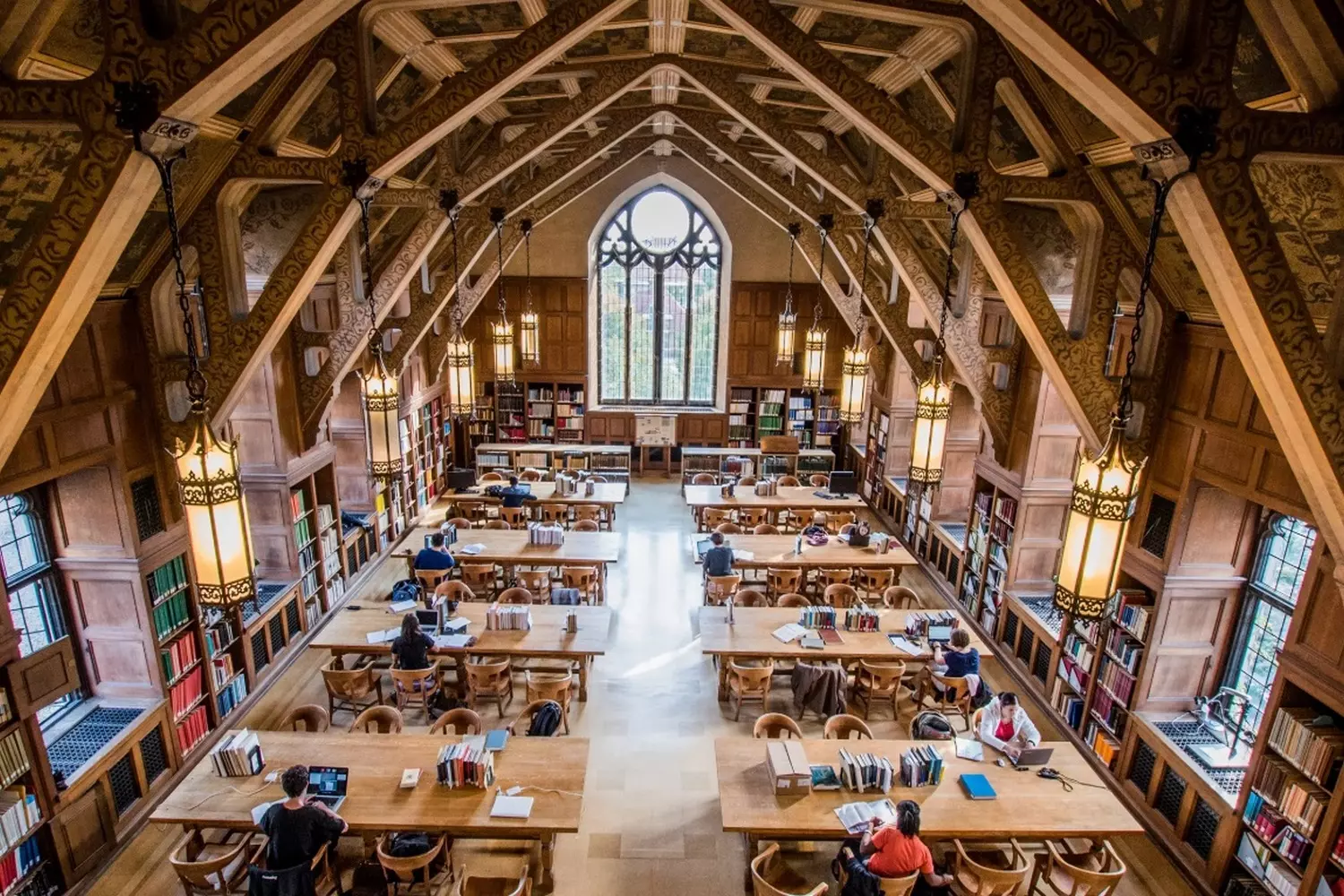
Sports in Chicago: A City of Champions, Legends, and True Fandom
Chicago is a city with a powerful sports spirit, where every game turns into a celebration and fans live through their teams. From baseball to hockey, sports here unite people of all ages and professions, creating a unique urban vibe. Chicago’s sports history is rich with brilliant victories, legendary players, and incredible emotions that you need to experience firsthand.
Main Sports Heroes of Chicago
- 01. Chicago Bulls
Basketball pride of the city and symbol of 1990s success. The team where Michael Jordan — one of the greatest athletes of all time — played.
- Six NBA championship titles that inspired entire generations.
- Seasons full of dramatic games, phenomenal shots, and team spirit.
- Home — the famous United Center arena, one of the largest in the USA.
- 02. Chicago Cubs
One of the oldest baseball teams in the USA, founded in 1876.
- Famous for breaking a 108-year drought without a World Series win in 2016.
- They play at the legendary Wrigley Field — a stadium with a unique atmosphere and vintage charm.
- Cubs games are a reason for large city-wide celebrations and fan gatherings.
- Nine National Football League championships.
- Soldier Field — a stadium overlooking Lake Michigan and downtown Chicago.
- Team legends include Walter Payton, Dick Butkus, and many others.
- 04. Other Famous Teams and Sports
- Chicago Blackhawks
An NHL team, hockey champions with five Stanley Cups to their name. Hockey in Chicago is a passion that draws thousands of fans during the winter months. - Chicago Fire FC
A Major League Soccer (MLS) club that is actively growing and attracting more supporters.
- 05. Sports Events and Traditions
- Chicago Marathon
One of the largest sporting events in the world, gathering tens of thousands of runners from across the globe. The marathon runs through scenic city neighborhoods and is a true test for participants. - NFL Christmas Game
A tradition for the Bears, who host home games during the holiday season. - Festivals and Fan Zones
During major matches and championships, Chicago streets fill with fans, music, and festive spirit.
In Chicago, sport is not only about professional teams and matches but also active recreation for residents. Throughout the city, thousands of sports fields, running tracks, and pools are open to everyone.
- Basketball in parks, baseball on school fields, running along the lake — sport lives in every neighborhood here.
- Bike routes, fitness clubs, and open training sessions make the city sporty and healthy.
Why is Chicago sports worth seeing with your own eyes? Because it’s more than just a game. It’s the energy of the crowd, incredible stories, loyalty to traditions, and passion that words cannot convey. Attending a Bulls, Cubs, or Bears game means becoming part of a legend, feeling the true American sports culture, and charging up with adrenaline for a long time.
Chicago sports is the heart of the city, beating to the rhythm of victories and supporting community spirit. Whether you’re a fan or a newcomer, here you will find your place and feel the true power of team spirit.

Safety and Travel Tips in Chicago: How to Enjoy the City Without the Stress
Chicago is a welcoming and vibrant city, but like any major metropolis, it’s important to stay alert. To ensure your trip goes smoothly and leaves only positive impressions, here are some simple yet valuable tips. Below is an honest, helpful, and easy-to-read guide on safety and tourist etiquette in Chicago.
Safety: Where to Be Careful
- 01. South Side neighborhoods at night are not the best places for walks
The South Side of Chicago, especially outside tourist areas, has a reputation for higher crime rates, particularly after dark. This doesn’t mean all of South Side is unsafe — there are great museums and cultural centers here, like the Museum of Science and Industry. But outside tourist zones, especially at night, it’s best to avoid lingering. - 02. Watch your belongings in transport and crowded places
Metro (especially in the evenings), large shopping centers, and tourist spots like Navy Pier are places where pickpockets might operate. Carry backpacks on your chest and keep bags in front of you. - 03. Use trusted apps and taxis
If you’re unfamiliar with the city areas, order taxis through official apps like Uber, Lyft, or local services with good reputations. This way, you’ll reach your destination safely without misunderstandings. - 04. The wind can be tricky
The nickname “Windy City” is no joke. Especially near Lake Michigan, the wind can be icy even in April or October. Dress in layers and don’t neglect scarves and hats, even if the temperature isn’t very low.
Helpful Tips for Tourists
- 01. Tips are a norm, not an option
In the US, it’s customary to leave 15–20% of your bill as a tip in restaurants or cafes. In bars — at least $1 per drink. Guides, taxi drivers, and porters also expect a small bonus for their service. Not tipping is considered rude. - 02. Tap water is safe
Chicago’s tap water undergoes strict purification and is safe to drink. This is convenient, especially in summer: just carry a reusable bottle and refill it at hotels or cafes. - 03. Pedestrians aren’t always kings
Although there are many pedestrian crossings downtown, not all drivers automatically yield. Cross streets strictly on green signals — especially at large intersections. - 04. Elevator or L? Know how to get around
The city’s transport is convenient and safe during the day. The most popular metro lines are Red and Blue Lines, but some sections pass through less safe areas. At night, it’s better to switch to taxis or car-sharing services. - 05. Don’t hesitate to ask for help
Chicagoans are generally friendly. If you get lost or can’t figure out directions, just ask — people will gladly assist you.
Mini Checklist for the “Experienced Tourist”
- Check the weather forecast and bring a windbreaker or umbrella — Chicago weather can change in an hour.
- Avoid showing off wealth (expensive jewelry, watches, gadgets on display).
- Keep your passport and large amounts of cash in the hotel safe; carry only copies and minimal essentials with you.
- Make a copy of the metro map and save offline maps on your phone.
- If traveling alone, inform someone close about your whereabouts.
Chicago is a city worth immersing yourself in completely. A little caution and some knowledge will help you experience it in all its bright, dynamic, and friendly glory.
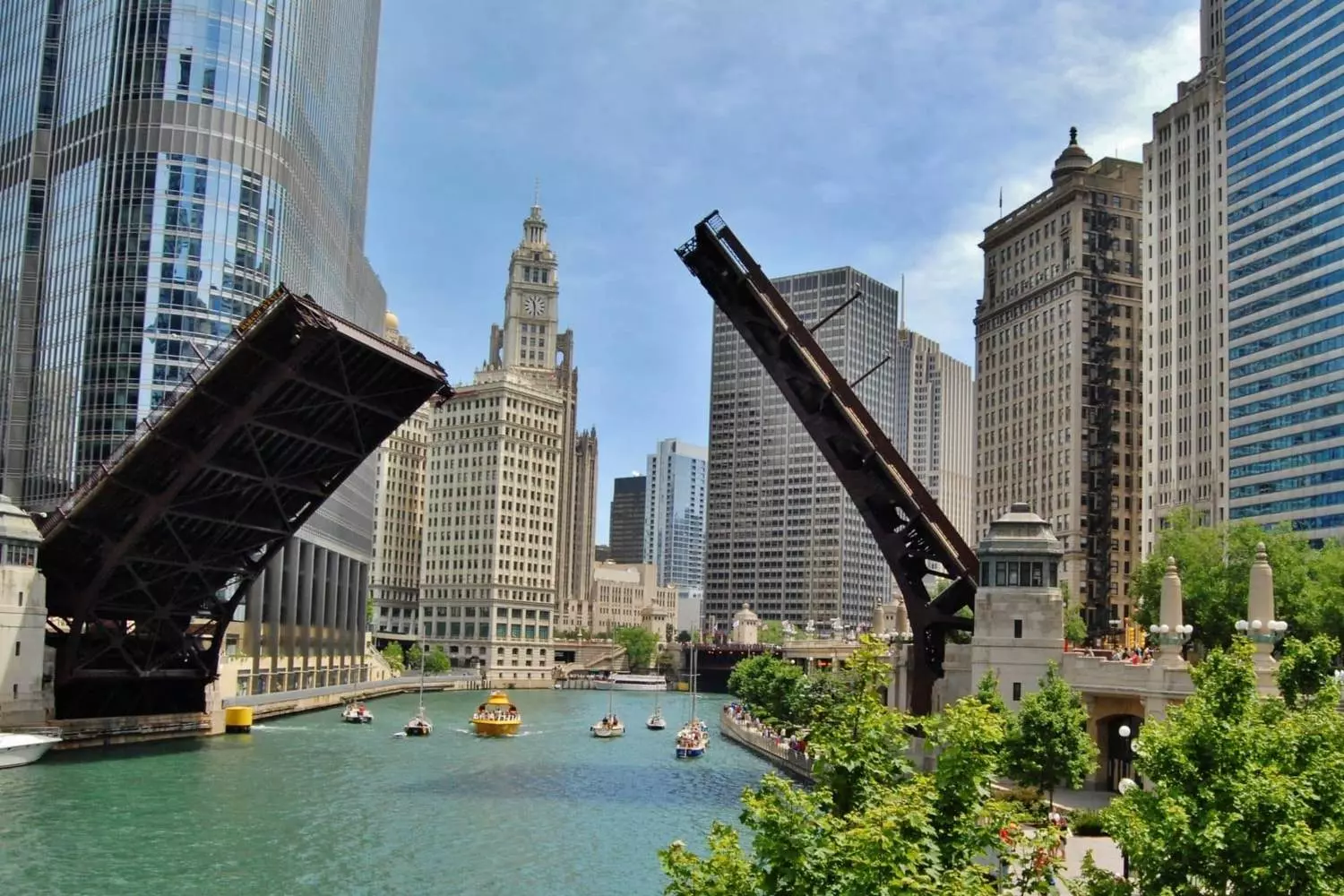
Chicago: 20 Surprising Facts About the Windy City That Will Amaze You
Chicago is one of the brightest and most dynamic cities in the USA, famous for its skyscrapers, jazz, and legendary deep-dish pizza. But behind the usual tourist symbols lie amazing stories and little-known facts. Did you know that Chicago not only invented skyscrapers but also… Scotch tape? Or that you can find a real “piece of Paris” right in the city? Ready to learn more? Here are 20 surprising facts about Chicago that will change the way you see this city!
- 01. A real "piece of Paris" in the city center
The street lamps on Michigan Avenue are exact copies of those in Paris because they were ordered from France for the 1893 World’s Fair. Also, Chicago has the "Parisian Bridge" (DuSable Bridge), styled after old European crossings. - 02. Scotch tape, Ferris wheel, and other inventions
Chicago is a city of innovation! Here:
- The first Ferris wheel in the world was invented here (for the 1893 exhibition).
- Scotch tape was invented here (3M started producing adhesive tape in the 1920s).
- The first deep-dish pizza in the USA was created here (Pizzeria Uno, 1943).
- 03. Underground streets and an "inside-out" city
After the Great Chicago Fire of 1871, the city was rebuilt, and some streets were raised. As a result, underground tunnels remain that were once first floors. - 04. The Chicago River – the only river in the world flowing "backwards"
In 1900, engineers reversed the flow of the Chicago River to prevent sewage from entering Lake Michigan. Now it flows into the Mississippi River instead of the Great Lakes. - 05. "The Dark Knight" was filmed here, but you might not have noticed
Many scenes from the Batman movies were shot in Chicago because Gotham was meant to resemble this city, not New York. - 06. Chicago – a city of records
- Home to the world’s longest bar (L&L Tavern — 84 meters).
- The Chicago Theatre has the largest neon sign in the world.
- It also has the highest concentration of drawbridges (37 in total!).
- 07. Chicago’s "invisible" railroad
The famous "L" (Elevated Train) isn’t just transport but part of city culture. Few know that some tracks run underground and some on the second floors of buildings! For example, at Washington/Wabash station, trains literally enter skyscrapers. - 08. Eating at gas stations is prohibited!
Yes, it’s officially banned to eat while refueling your car in Chicago to prevent litter and fires. So if you buy a hot dog, finish it before filling up! - 09. Chicago’s "train graveyard"
At the abandoned 13th Street station, old train cars from the 1930s–50s rust away. They aren’t scrapped as they are considered historical heritage. - 10. The first bloody “bath” in America happened here
This refers to the Haymarket Riot (1886), when clashes between workers and police led to casualties. This event sparked the establishment of May 1 as International Workers’ Day. - 11. University of Chicago houses the world’s first nuclear reaction
In 1942, under the stands of the university football field, Enrico Fermi conducted the first controlled nuclear chain reaction. Today, a memorial plaque and Henry Moore’s sculpture "Stupor" mark the spot. - 12. Chicago’s Metra Bridge – the oldest in the USA
The two-level bridge on West Lake Street (1893) still operates: cars on top, "L" trains below. And yes, it survived the Great Fire! - 13. The "museum of things you can’t touch"
The Surgical Science Museum holds 9,000 medical artifacts, including a skeleton of a woman who died of syphilis (19th century) and a collection of glass eyes. Creepy but fascinating! - 14. Chicago’s "haunted house"
Resurrection Manor in the south is one of the most haunted places in the USA. Legend says it was built by a doctor who performed illegal medical experiments. Locals claim to hear moans at night. - 15. Chicago’s "Wailing Wall"
In the Pilsen neighborhood, there is an unusual wall where people from all over the world stick notes with wishes. Locals believe attaching a note will make the wish come true. - 16. Chicago’s "Bermuda Triangle"
The Bridgeport area was known for an unusually high number of disappearances in the 1970s-80s. Local newspapers called it the "Chicago Triangle." - 17. The lost island in the city center
On the Chicago River there is an artificial island called Bubbly Creek, named for the gas bubbles rising from the bottom. These are remnants of the 19th-century meatpacking industry. - 18. Chicago’s "Stonehenge"
In Burnham Park stands a mysterious stone structure resembling a miniature Stonehenge. Its purpose remains unknown. - 19. The city where "McDonald’s" was born
The first McDonald’s restaurant opened in the Chicago suburb of Des Plaines in 1955. Today, the original McDonald’s operates as a museum. - 20. The underground waterfall
In the Rogers Park area, there is the world’s only underground waterfall, 12 meters high. It is located in an old water tunnel system.
Chicago isn’t just skyscrapers and pizza. It’s a city that surprises at every step: from a reversed river and underground streets to the cinematic Gotham. Want to know it better? It’s time to book a tour and see it all with your own eyes!

Want to See Chicago Through a Local’s Eyes? We Know How!
Chicago doesn’t try to please you — it simply lives. With its own rhythm, history, music, architecture, and unforgettable food. It’s one of those cities that don’t just pass by — it stays with you.
American Butler offers personalized tours of Chicago — no crowds, with a professional guide, transfer service, and a genuine itinerary, not just a list from Google. You’ll see the city, hear its stories, and taste what’s truly worth trying.























